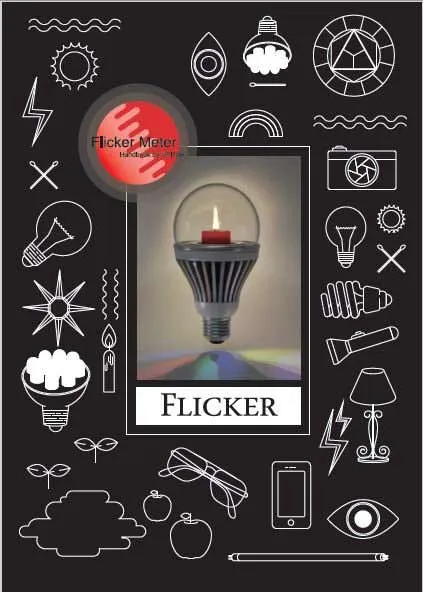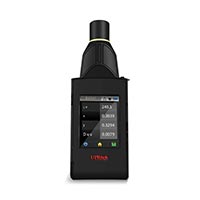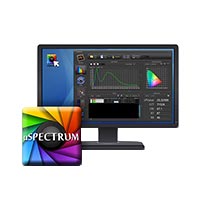What is Cyanosis Observation Index (COI) ? 1 new measurement

Introduction – Cyanosis and Clinical Lighting
What is Cyanosis? Inadequate lighting in medical settings can impede a vital visual diagnosis of the skin, called Cyanosis. So in this article we will discuss a crucial light measurement called the Cyanosis Observation Index (COI), used to measure your light’s ability to display patient skin colors accurately.

What Is Cyanosis?
Cyanosis is a bluish tint in a patient’s skin, lips, and fingernails, indicating oxygen deprivation requiring immediate attention. During Covid-19, there was a renewed emphasis on the importance of Cyanosis detection, as we saw cases of Silent Hypoxia, where a patient would be in a dangerously low oxygen state but not exhibiting distress.
The problem with Medical Lighting
Most medical facilities utilize artificial lighting, primarily LEDs and fluorescent lights, which can present issues with color reproduction on objects.
This is because, unlike full-spectrum incandescent light or sunlight, artificial lights are deficient in specific colors, affecting the accurate representation of skin color.

A new measurement is called Cyanosis Observation Index(COI).
A new metric, called Cyanosis Observation Index (COI), measures your light’s ability to bring out the colors of your skin, which is very much like a CRI or Color Rendering Index. In similar fashion, it takes a source light (i.e., your test light) and tests how it reproduces colors on objects compared to a reference light (i.e. ideal light). The closer the source light is to the reference, the better the COI score.
How do you measure Cyanosis Observation Index? Spectrometer.
Measuring COI is easy by using a spectrometer with the COI metric. You point the meter at the light and take a reading. If your COI scores are low, your lights are considered appropriate (less than 3.3 for Australian/NZ standards).
Additionally, it’s also essential to use a spectrometer to measure the color integrity of your lights over time. LEDs and Fluorescent lights will shift in color with use, which may compromise Cyanosis observation.
Furthermore, a Spectrometer is a light meter device that can accurately discern many different wavelengths of color from a full color spectrum and are used for many color lighting applications. Comparatively, other meters like Colorimeters are only based on Red, Blue, and Green and cannot calculate COI or any other CRI because these metrics require a full spectrum of colors.

MK350S Premium Spectrometer
Cyanosis Observation Index calculations (COI deep dive).
As mentioned, COI compares a source light against a target reference light, specifically a 4000K Planckian radiator. It uses standard skin and cyanotic skin as objects, and measures how the source light would reproduce those skin colors. It then compares them to how a reference light would render those skin colors. If the differences are small, the COI score will be lower, indicating that the source light compares favorably to the reference light.
The calculation of COI, simply put, is as follows:
ΔEskin = Difference between 4000K light versus source light in rendering standard skin.
ΔEcyan = Difference between 4000K light versus source light in rendering cyanotic skin.
Those differences are added together and divided by 2 to give you a COI reading.
COI = ΔEskin + ΔEcyan / 2
Please access “AS NZS 1680.2.5-2018.pdf” for more complete calculation information.

COI Metric taken by MK350S Premium
COI uses CIE Lab color space (deeper dive).
So exactly how are comparisons made between two lights sources? They are compared in a color space (or color map).
The Color Space.
When comparing colors (source vs. reference), you compare them in a 3-dimensional Color Space (e.g., CIE 1931). The source light’s color will have three coordinates (X, Y, Z) representing a point in the color space. A reference light’s color will have its own X, Y, and Z coordinates. The relative distances between those two points will be ΔX, ΔY, and ΔZ and represent how close the source is to the desired reference color. The smaller the deltas (Δ), the better the source light.
CIE 1931 Color Space – Wikipedia.org
The CIE Lab Color Space.
COI calculations use a newer color space called “CIE Lab,” which uses the Opponent Theory of colors. In short, it’s a more sophisticated way of assessing how humans visualize color. It’s not as simple as Reds, Greens, and Blues as in the old CIE protocols. Our neural visual pathways are more complex – our visual senses always compete with each other – blues vs. yellows, reds vs. greens, dark vs. light (i.e., opponent theory).
The ΔX, ΔY, and ΔZ values mentioned above are translated into corresponding CIE Lab ΔL, Δa, and Δb and eventually into the ΔEskin, ΔEcyan mentioned in the previous section.
In short, CIE Lab is a better way to represent human visualization, which means it is a more accurate way to assess how humans visualize Skin Color and Cyanosis.
CIE LAB color space – Wikipedia.org
Australian and New Zealand Medical Lighting Regulations.
In Australia/New Zealand, there are new regulations (AS/NZS 1680.2.5:2018) for medical lighting, which include COI. They state that the COI index must be less than 3.3, along with other rules for other essential metrics.
AS/NZS 1680.2.5:2018
- COI < 3.3
- Correlated Color Temperature (CCT) 3300K to 5300K
- Ra >= 80 (CIE 13.3)
- Rf >=80
- Rfskin >= 90 (IES TM-30-15)
What Cyanosis Observation Index means to you?
Inadequate lighting can compromise a necessary visual diagnostic in medical environments. So ensuring your nurses and clinicians can clearly and quickly detect Cyanosis under your lights is paramount to providing immediate attention to oxygen-deprived patients. Find a spectrometer and take the time to measure your lights for the Cyanosis Observation Index. It’s easy to do and worthwhile to boost your confidence in your facilities.

Photo by Los Muertos Crew: https://www.pexels.com/photo/a-physician-examining-her-patient-8460030/
UPRtek MK350s Premium includes Healthcare Lighting metrics.
UPRtek’s MK350S Premium is our most versatile spectrometer and includes Healthcare Lighting metrics: COI, Rf, Ra, Rfskin, CCT, Flicker, HEV (for hazardous blue light), and Human Centric Lighting.
MK350S Premium is lightweight and portable, with an intuitive user interface. It provides real-time measurement results and data recording facilities used for statistical analysis. It’s ideal for healthcare institutions, research organizations, and lighting professionals.
Related Posts:
- What is Human Centric Lighting? Development, Applications, and Solutions
- Human Centric Lighting for Offices: Impact, Benefits, and System Development
- What Is an Imaging Colorimeter? Applications & Features
- What Is a Grow Light? How It Works and Different from Regular Bulbs?
- Cannabis Grow Lights: Which Light Is Best for Growing Cannabis?

MK350S Premium full-featured spectrometer including healthcare metrics.
Hot Product
Handbook Series

The Flicker Handbook
Everything thing you need to know about Flicker, an insidious, potentially serious lighting artifact impacting visual safety for public places like hospitals, offices, libraries, and more...
About UPRtek

United Power Research and Technology
UPRtek (est. 2010) is a manufacturer of portable, high-precision light measurement instruments; Handheld Spectrometers, PAR meters, Spectroradiometers, Light Calibration Solutions.
UPRtek HQ, R&D and manufacturing are all based out of Taiwan, with Worldwide representation through our certified Global Resellers.
Latest Articles
Category












0 Comments